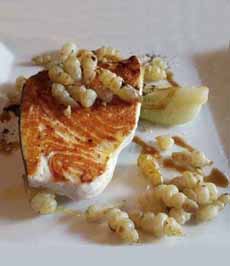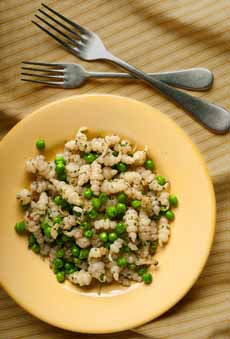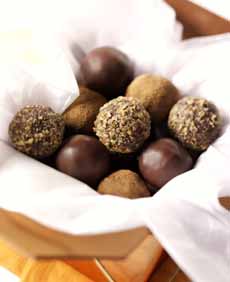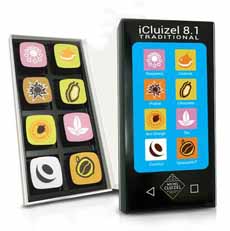|
Most of us know tapioca as a pudding filled with little tapioca “pearls.”
But it’s so much more than that.
WHAT IS TAPIOCA?
Tapioca is a pure starch extracted from the root of the cassava (pronounced kuh-SAH-vuh, photo #1). The root is also called manioc, arrowroot and yuca. Not yucca, mind you: That’s a totally different plant and not typically eaten. The food, yuca, is similarly pronounced, but botanically unrelated.
Cassava is a woody shrub native to northern Brazil. It has been grown for thousands of years, and it spread throughout South America. It grows well in poor soil, and its starchy, tuberous root is a major food source, cooked like potatoes.
In the Tupi-Guarani* language of Brazil, the processed cassava is called tipioca; Spanish and Portuguese traders heard it as tapioca.
Tipi means residue and oc means to squeeze out. This describes how the starch is produced: Crushed root fibers are steeped in water; then the liquid is squeezed out.
Why all the effort?
The milky, bitter liquid (yare) in the pulp contains cyanide—and was used to make poison darts.
What’s left is the purified starch—tapioca—which is gluten-free, fat-free, cholesterol free, sodium-free and sugar-free. There are no added preservatives.
You can find tapioca in a variety of formats: small pearls, large pearls, jumbo pearls (or boba, which are the large black, white or otherwise-colored pearls used for bubble tea), instant (granulated) tapioca, tapioca flour, flakes and sticks.
USES FOR TAPIOCA
Beyond masking the familiar tapioca pudding, use tapioca:
As a thickener for gravies, pies and soups.
In gluten-free flour mixes for baked goods.
As a fun drink garnish in bubble tea…
…and now, appearing for perhaps the first time in the U.S…
In gluten-free crêpes.
TAP NYC: THE COUNTRY’s FIRST “TAPIOCA RESTAURANT”
Tap NYC has opened in Manhattan, the first of what we hope will be a casual chain of tapioca-based crêperies.
While tapioca crêpes are popular in Brazil, here they are unknown (and hey, Today Show, why didn’t you feature them in your Olympics coverage)?
The crêpes are not like France’s soft, wheat-based crêpes. Instead, the tapioca flour cooks up firm (photo #3), so it can be held like a sandwich or a wrap (photo #4).
Filling can be savory or sweet, for any meal of the day, snack or dessert.
A tapioca crêpe is a the canvas waiting for whatever ingredients you wish to add. We think of them as tapioca sandwiches, analogous to pita sandwiches or wrap sandwiches. Some examples from the Tap NYC menu:
Caprese: mozzarella, tomatoes, basil pesto
Chicken, fresh mozzarella, tomatoes
Mashed avocado and eggs
Mushrooms, goat cheese, arugula, truffle oil
Prosciutto, muenster and arugula
Vegetable: avocado, tomato, zucchini
Dessert: dark chocolate or peanut butter with bananas and/or strawberries (photo #5)
We are so addicted to these terrific crêpes, along with the juices and smoothies, that we haven’t begun to explore the rest of the menu: salads, bowls, teas and coffees galore.
We have, however, enjoyed the gluten-free brigadeiros (truffles), cakes, cheese bread and tapioca pudding—a version far better than you’ve likely tasted before. And we’re not on a gluten-free diet; just a good-food diet.
The first Tap NYC location is on Manhattan’s Upper West Side: 267 Columbus Avenue between 72nd and 73rd Streets.
It’s open 7 days from 7:30 a.m. to 8 p.m. (6 p.m. on Mondays). Learn more at TapNYC.com.
TAP NYC is the undertaking of two Brazilians living in Manhattan, who dearly missed their tapioca crêpes.
Thank goodness for their desire to share this food not only with homesick Brazilians but all of us natives.
And for those who live nowhere near Tap NYC: You can buy the tapioca (photo #2) and make your own. It couldn’t be easier!
________________
|
|

[1] Cassava root, also called manioc and other names (photo David Monniaux | Wikipedia).

[2] A package of premium tapioca starch available from Tap NYC.

[3] Just add water to the tapioca and cook it in an omelet pan. Top with the desired ingredients and flip over like an omelet (photos #2, #3, #4 and #5 courtesy Tap NYC).
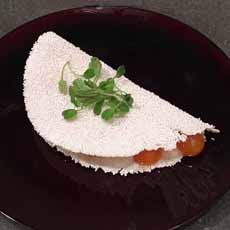
[4] The finished sandwich.
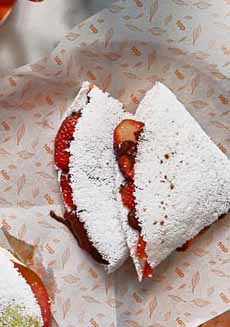
[5] A sweet variation: strawberries and chocolate.
|



